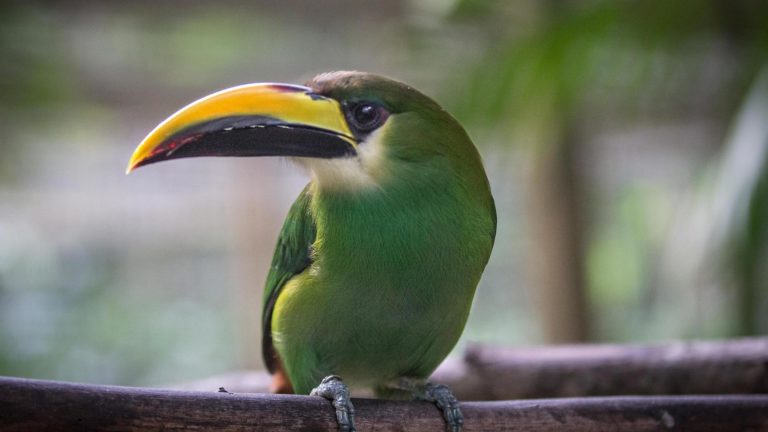Emerald Toucanet Aulacorhynchus prasinus
Taxonomy
Scientific name:
Aulacorhynchus prasinus
Family:
Ramphastidae
Genus:
Aulacorhynchus
Species:
Prasinus
Common names:
Mountain toucan, emerald toucanet
Biology
Morphology:
The male and female are monomorphic (alike) in color, but dimorphic (different) in size. Emerald toucanets are commonly 30 to 33 cm. The male weighs about 160 g and the female about 149 g. Their feather coloration is dominantly green with highlights of whites, grays, and reddish browns, which makes them blend in with the colors of the trees in which they dwell.
Reproduction:
Mating season is typically March through July. They nest in abandoned tree cavities which were previously made by smaller species. They lay 3 to 4 eggs which have an incubation period of about 16 days. The chicks take flight as early as 40 days and do not return to the nest at all at about 43 days.
Diet:
Emerald toucanets are omnivorous, eating lizards and the eggs or nestlings of other birds when possible, though insects and fruits are the largest part of their diet.
Ecology
Range:
Found from southern Mexico through Central America to Venezuela and Peru.
Habitat:
Principally found in mixed mountain forest from sea level to 2,600 m, but more common above 900 m. They generally prefer the dense forest and are usually found in the highest branches of the trees.
Threats
The destruction of their habitat and illegal pet trade. IUCN Red List: Least concern.

